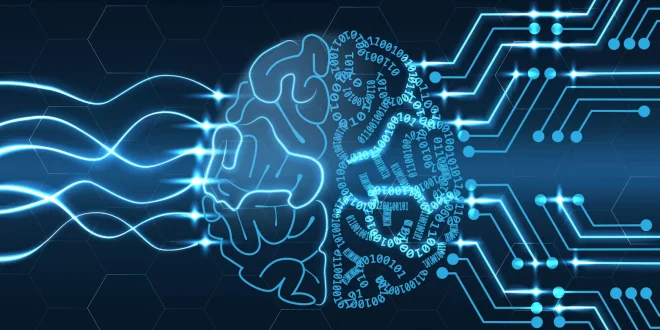In the realm of futuristic technology, a groundbreaking concept known as “Neurosynaptic Integration” is quietly emerging, pushing the boundaries of human-machine interaction to unprecedented levels. By seamlessly merging biological brains with artificial intelligence (AI), this unique approach presents the potential for enhanced cognitive abilities and profound insights into human consciousness.
- Neural Implants for Augmented Cognition: Neurosynaptic Integration pioneers the use of advanced neural implants that work in harmony with the human brain. These implants act as cognitive enhancers, augmenting memory, learning capabilities, and processing speed. By creating a direct link between the brain and AI algorithms, individuals can access vast amounts of knowledge and experience heightened cognitive functions like never before.
- Collective Intelligence through Brain Networks: Imagine a future where interconnected brain networks facilitate real-time information sharing and collective problem-solving. Neurosynaptic Integration seeks to develop brain-to-brain communication systems, allowing individuals to share thoughts, emotions, and insights instantaneously. This interconnected “collective intelligence” could have transformative implications in fields like healthcare, emergency response, and collaborative decision-making.
- Enhanced Sensory Perception: By integrating neural interfaces with sensory organs, Neurosynaptic Integration aims to amplify human perception. From vision and hearing to touch and taste, individuals can experience heightened sensory experiences. For instance, this technology could enable the visually impaired to “see” through AI-assisted visual inputs or enable individuals to perceive additional spectrums of light or sound.
- Cognitive Enhancement for Education: Neurosynaptic Integration holds tremendous promise for education by revolutionizing learning methodologies. AI algorithms could tailor educational content and teaching styles to suit individual learners’ cognitive strengths and weaknesses, maximizing their potential for understanding and retention. This personalized approach to education could lead to a more efficient and effective learning experience for students of all ages.
- Ethical Considerations and Consciousness Exploration: As this technology advances, it raises ethical considerations and prompts philosophical explorations into the nature of consciousness. Integrating AI with the human brain blurs the lines between natural and artificial intelligence, questioning the essence of self-awareness and what it truly means to be conscious. Societal debates on data privacy, autonomy, and individuality in the face of such integration are essential to navigate this uncharted territory responsibly.
Neurosynaptic Integration stands at the forefront of a technological frontier, presenting the possibility of merging human minds with artificial intelligence in profound and unprecedented ways. From cognitive enhancement and brain-to-brain communication to expanded sensory perception and personalized education, this concept has the potential to revolutionize human capabilities and deepen our understanding of consciousness. As we explore this unique synthesis of brains and machines, it is imperative to approach it with ethical mindfulness and philosophical curiosity to unlock the transformative potential while safeguarding human values and individuality.
 Blogmado Empower Your Wealth: Expert Insights for Success
Blogmado Empower Your Wealth: Expert Insights for Success



